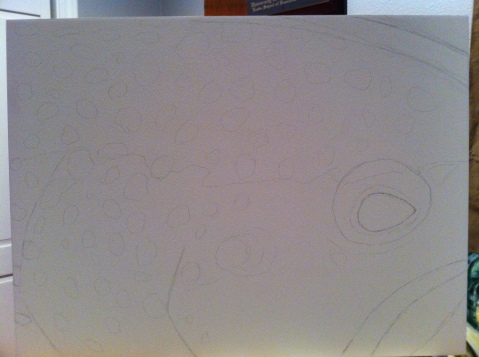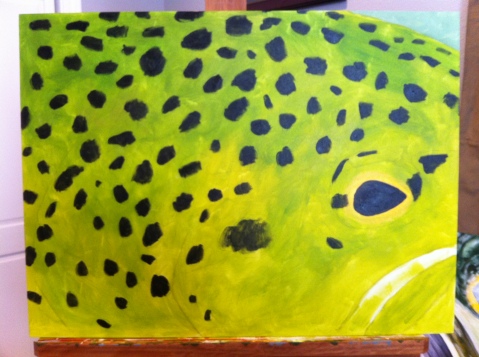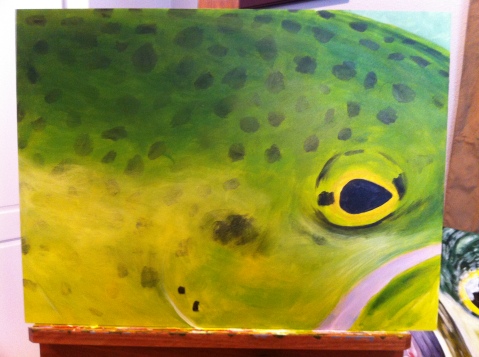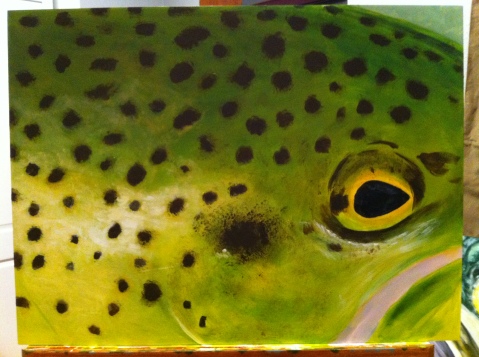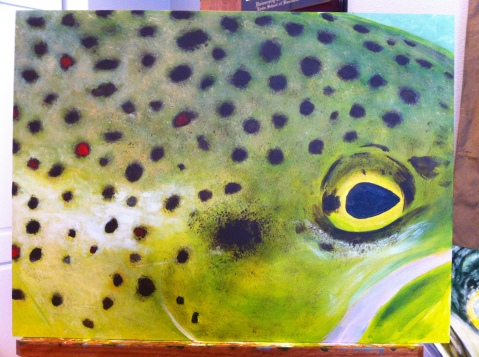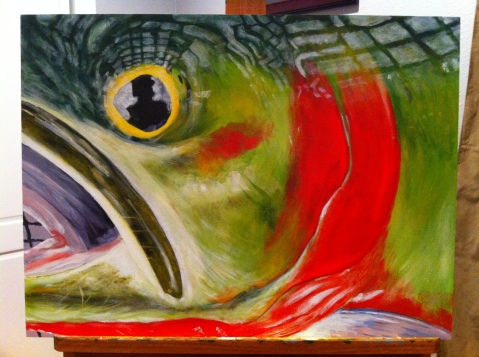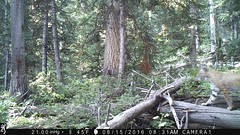Brown
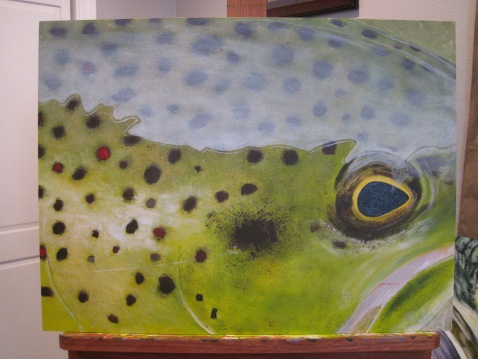 Brown, 18″ x 24″ acrylic on panel
Brown, 18″ x 24″ acrylic on panel
It’s the second painting in two weeks. Woohoo! I’m on a roll. Well, not exactly. I’ve got a nasty cold, and I’m trying to make the best of my time indoors. Here are a few shots of the process…
It all started with a pencil sketch.
Then I blocked in the whole surface with a little bit of color.
Whoa, that was a little too light. So, I then darkened it up a bit and added some color variation along the flank.
Then I added a few more layers and highlights.
Next, I lightened the whole piece up a bit putting subtle browns in the brown trout which couldn’t be complete without a few beautiful red spots.
Finally, I added the reflection, eye detail, and mouth corner. I’m not sure it’s done yet, but I’m done for now.
Nice Video on Why Fly Fishers Do What They Do
If I had to explain to a non-fisherman why I love fishing so much, I’d just show them this short film by Peter Vong.
Self-portrait in Stream
This was a really fun experiment. It’s (8″ x 24″) acrylic on plywood like many of my paintings, but it takes a different approach than most of my work. I sketched a scene entirely from my imagination without the aid of a photograph or any other visualization (that’s a first), I painted quickly (another first), used bold colors, and didn’t fuss over things (and another first). I’m pretty happy with how it turned out. Maybe I’ll do some more like this.
It all started with a sketch done with a Sharpie on a piece of gesso’d scrap plywood…

Quickly dash in some sky and purple mountains…

Keeping the colors bold, add some foothills and a stream bank …

Add some water…

And a few trees…

Finally, put myself fishing in the stream to complete the self-portrait…

Best Outdoor Sports Related “Sh*t People Say” Videos
I’m sure you’ve seen a number of “Shit People Say” videos lately. Yeah, I know, that’s sooo last week, and you’re probably tired of them by now. That said, here are a few outdoor sports iterations of the popular internet meme.
Sh*t Cyclists Say
Sh*t Runners Say
Sh*t Ultrarunners Say
Sh*t Fly Fishermen Say
Sh*t Triathletes Say
Sh*t Kayakers Say
Sh*t Skiers Say
If you come across any other interesting ones, let me know.

